Disclosure: This article contains affiliate links. We may earn a commission from purchases at no extra cost to you, which helps our travel content.
Standing at the edge of the Li River as dawn broke over Yangshuo's otherworldly karst peaks, I realized why this landscape has inspired Chinese artists for centuries. The ethereal mist dancing between limestone towers, cormorant fishermen casting nets in golden light, and terraced rice fields stretching to the horizon—this photographer's paradise in Guangxi Province offers visual treasures at every turn. As someone who typically photographs underwater ecosystems, this spring journey into China's most iconic landscape was a thrilling departure from my comfort zone that rewarded me with some of my most treasured images.
Essential Gear for Karst Photography
Before diving into locations, let's talk gear. Yangshuo's dramatic landscapes demand versatility. I found myself constantly switching between wide-angle shots of expansive karst panoramas and telephoto compression of distant peaks. My go-to setup included a mid-range zoom (24-70mm) and a telephoto lens (70-200mm).
The region's variable lighting conditions—from misty mornings to harsh midday sun—make a quality polarizing filter absolutely essential. It helped manage reflections on the river and dramatically improved contrast in those iconic limestone formations.
Don't underestimate Yangshuo's humidity! My silica gel packets saved my gear from condensation issues when moving between air-conditioned hotels and the steamy outdoors. I'd also recommend a lightweight rain cover for your camera—spring showers can appear suddenly, but often create magical atmospheric conditions worth capturing.
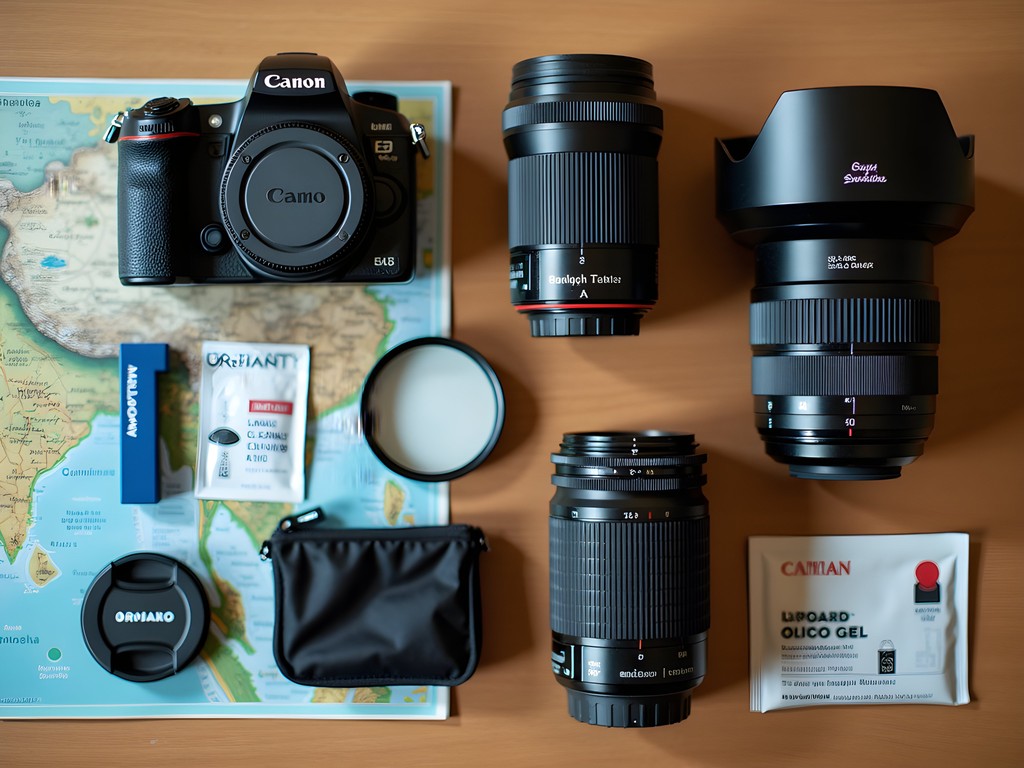
💡 Pro Tips
- Pack a polarizing filter to cut glare on the Li River and enhance cloud detail
- Bring silica gel packets to combat humidity and prevent lens fogging
- A lightweight tripod is essential for dawn/dusk shooting when light levels are low but colors are most vibrant
Dawn on the Li River: The Photographer's Golden Hour
If there's one non-negotiable in your Yangshuo photography itinerary, it's catching sunrise on the Li River. I arranged a private bamboo raft through my guesthouse (expect to pay 300-400 yuan) to reach the iconic spot where the 20 yuan banknote scene was photographed.
My guide, Mr. Wei, knew exactly where photographers needed to be positioned and timed our arrival perfectly—45 minutes before sunrise. The interplay of mist, mountains, and the first golden rays created a scene straight from a traditional Chinese painting.
What truly elevated my river photography was a variable ND filter that allowed me to create those silky water effects even as daylight strengthened. When shooting cormorant fishermen, I found that a slightly longer exposure (around 1/15 sec) beautifully captured the ethereal quality of the scene while maintaining the sharpness of the distant karsts.
Pro tip: While everyone photographs from the western bank, consider crossing to the eastern side for a completely different perspective with fewer photographers to navigate around.

💡 Pro Tips
- Arrive at least 45 minutes before sunrise to capture the best mist conditions
- Book a private bamboo raft rather than joining a group tour for flexibility in timing and positioning
- Pack hand warmers in spring - those pre-dawn mornings on the water can be surprisingly chilly
Xianggong Hill: Panoramic Perspectives
For the most dramatic aerial views of Yangshuo's karst landscape, Xianggong Hill (相公山) is simply unmatched. Located about 28km from Yangshuo town, this lookout point requires some planning to reach, but the panoramic vistas make every effort worthwhile.
I hired a driver for the day (approximately 300 yuan) who collected me from my hotel at 4:30am to ensure we reached the summit before sunrise. The 15-minute climb up stone steps is moderately challenging in the dark, so I was thankful for my headlamp that kept my hands free for carrying gear.
The viewing platform gets crowded even at dawn, so arriving early helps secure a prime spot. I set up my tripod at the northeastern corner which offered the best composition of the Li River's famous horseshoe bend weaving between karst formations.
While most photographers pack up after the golden hour, I stayed until mid-morning and was rewarded with fascinating light patterns as the sun climbed higher, creating dramatic shadows between the peaks. The changing light conditions meant I was constantly adjusting settings, and my lens cleaning kit proved invaluable as morning dew settled on my equipment.

💡 Pro Tips
- Arrive at least 30 minutes before sunrise to secure a good position on the crowded viewing platform
- Bring a zoom lens to capture both wide panoramas and compressed telephoto shots of distant karst clusters
- Consider staying longer than the typical golden hour shoot - mid-morning light creates interesting shadow patterns between peaks
Capturing Rural Life in Yangshuo's Villages
While the karst landscapes rightfully steal the spotlight, some of my most compelling images came from the rural villages dotting the countryside around Yangshuo. Cycling through these communities offered intimate glimpses into agricultural life that has remained largely unchanged for generations.
I rented a quality mountain bike from Bike Asia in Yangshuo (100 yuan/day) and followed their recommended route through the Yulong River valley to villages like Jiuxian and Baisha. Starting early allowed me to catch farmers heading to their fields with water buffalo and elderly residents practicing tai chi in village squares.
When photographing people, I always approached with respect and used my pocket translator to ask permission in Mandarin. This simple courtesy usually resulted not only in permission but often invitations into homes and fascinating cultural exchanges. One elderly woman in Jiuxian proudly showed me how she makes traditional rice wine, creating a photo essay opportunity I hadn't anticipated.
The rural backroads also revealed perfect vantage points for juxtaposing traditional farming activities against the dramatic karst backdrop. I found that early morning (6-8am) and late afternoon (4-6pm) provided the most flattering light for these environmental portraits, with farmers often more visible in fields during these cooler hours.
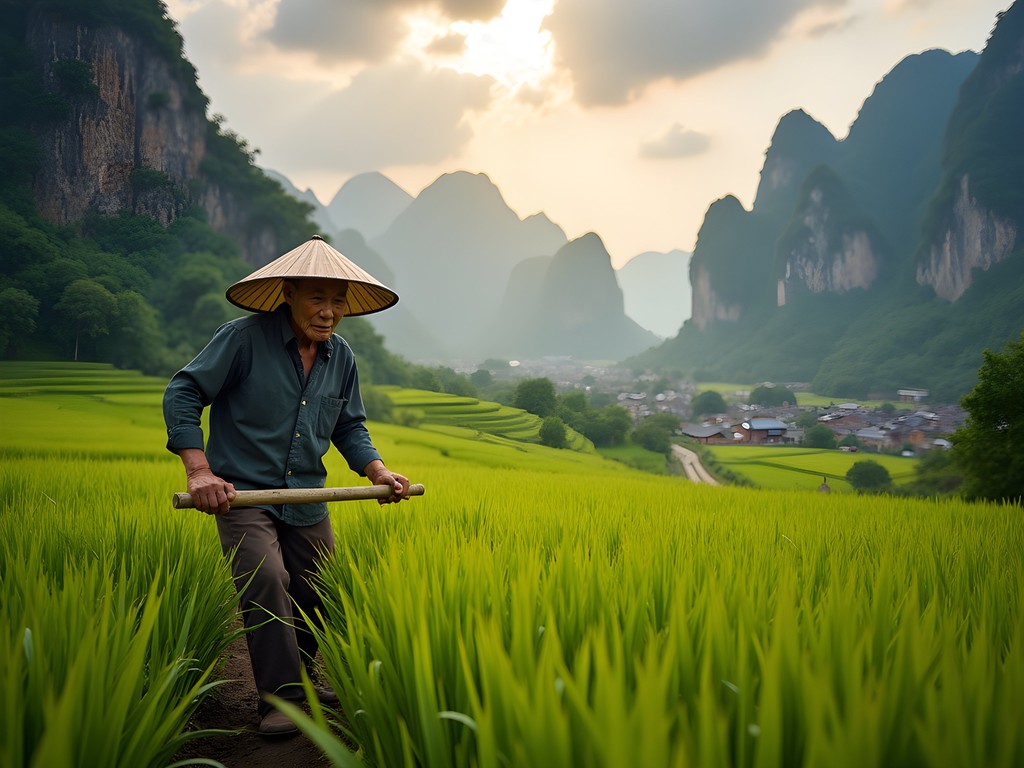
💡 Pro Tips
- Learn a few basic Mandarin phrases to help when asking permission for portraits
- Carry small photo prints from previous travels as gifts for people who allow you to photograph them
- Explore the smaller dirt paths between villages where tourists rarely venture for more authentic rural scenes
Night Photography in Yangshuo West Street
After days of rural landscapes, I was eager to try something completely different: night photography in Yangshuo's vibrant West Street (Xi Jie). This ancient street transforms after sunset into a neon-lit wonderland that offers fascinating urban compositions.
The technical challenges here are significant—moving crowds, dramatic lighting contrasts, and limited space for tripods. I found my camera wrist strap invaluable for quick shooting while navigating the bustling crowds.
The reflections of colorful lanterns in puddles after a spring rain created some of my favorite images. For these shots, I used a wider aperture (f/2.8) with a moderate ISO (800-1600) to maintain reasonable shutter speeds while handholding.
Don't miss photographing the traditional cormorant fishermen who perform for tourists along the Yulong River section near West Street. While admittedly staged, their illuminated bamboo rafts against the darkness create hauntingly beautiful images. For these night river scenes, I finally needed my compact travel tripod for longer exposures.
One unexpected gem was the rooftop bar at Monkey Jane's Hostel, which offered elevated perspectives of the street life below and distant karst silhouettes illuminated by the town's lights—a perfect spot for blue hour photography when the sky still holds some color but the artificial lights have come on.
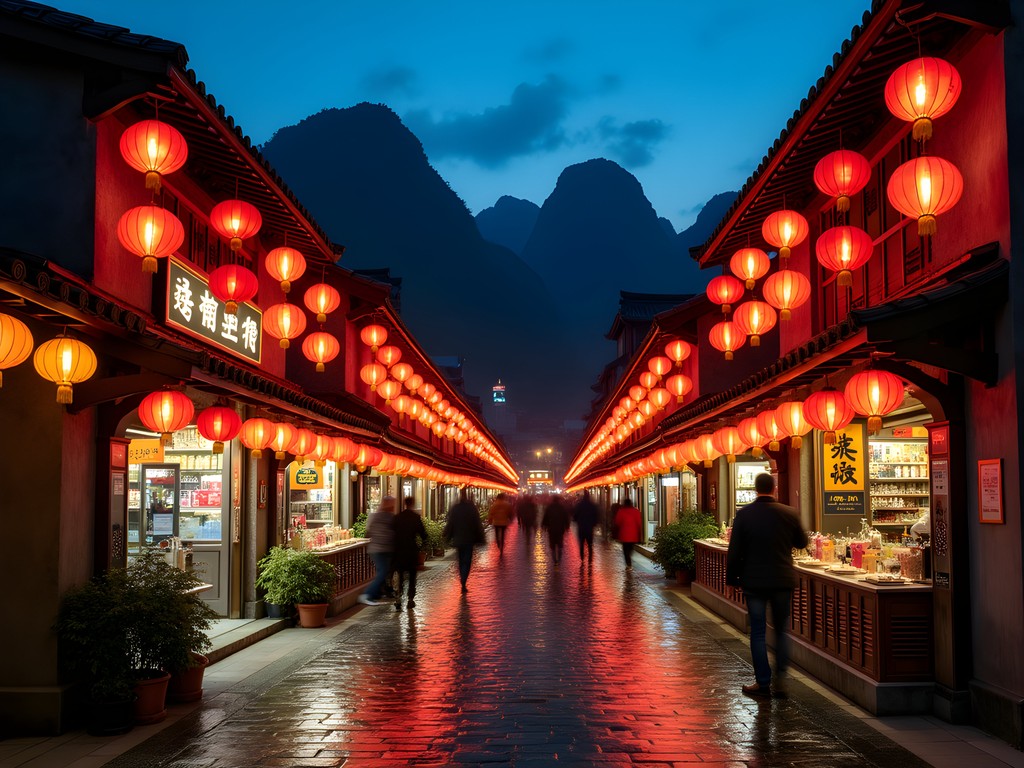
💡 Pro Tips
- Use reflections in puddles and shop windows for creative urban compositions
- Visit during blue hour (just after sunset) when the sky still has color but lanterns are illuminated
- Try some intentional camera movement (ICM) techniques to capture the energy of the crowded street in abstract ways
Final Thoughts
As I packed away my gear on my final evening in Yangshuo, scrolling through the thousands of images I'd captured, I realized this landscape had fundamentally shifted my perspective as a photographer. While my heart still belongs to underwater photography and coral ecosystems, these karst formations—shaped by water over millions of years—tell an equally compelling story of our planet's geological wonders.
Yangshuo rewards the patient photographer who's willing to rise before dawn, hike in darkness, and wait for perfect light. The combination of dramatic landscapes, rich cultural traditions, and the gentle rhythm of rural life creates a visual narrative unlike anywhere else I've photographed.
Whether you're drawn to grand landscapes, intimate cultural portraits, or the interplay of traditional life against extraordinary backdrops, Yangshuo offers endless creative possibilities. Just remember to approach with respect, particularly in rural villages, and the rewards will extend far beyond your memory cards. I left with not only photographs but connections and experiences that have enriched my understanding of this remarkable corner of China.
✨ Key Takeaways
- Prioritize early mornings for the magical combination of mist and golden light on the Li River
- Balance iconic landscape shots with intimate portraits of rural life for a more complete visual story
- Learn basic Mandarin phrases to connect with locals and gain access to authentic photo opportunities
- Consider visiting in spring when crowds are lighter and atmospheric conditions are ideal for photography
📋 Practical Information
Best Time to Visit
Spring (April-May) for lush landscapes and comfortable temperatures
Budget Estimate
$50-100/day including mid-range accommodation, food, and transportation
Recommended Duration
7 days minimum to capture different lighting conditions
Difficulty Level
Moderate - Involves Early Mornings, Some Hiking, And Navigating A Non-English Speaking Area


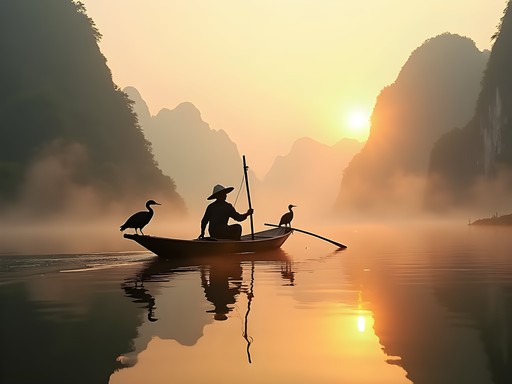
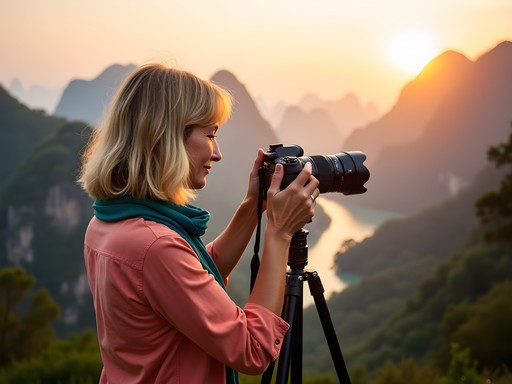
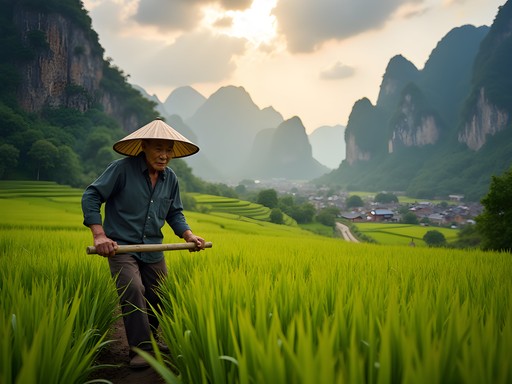




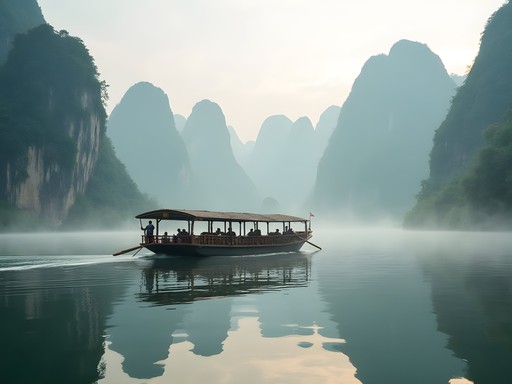






Comments
freephotographer
Just got back from Yangshuo and your guide was spot on! The morning mist was everything you promised. Thanks for the inspiration!
Michelle Moore
So happy to hear that! Would love to see some of your shots if you want to share them!
skyadventurer
Just booked my trip after seeing these photos! Can't wait!
coolnomad
Just got back from Yangshuo last week! Your post would have been so helpful before I went. The humidity really affected my camera gear - had to keep everything in ziplock bags with silica packets. The cormorant fishermen were my favorite subjects to photograph, though I learned later some of them are just posing for tourists now rather than actually fishing. Still made for great photos!
Stephanie Romano
Michelle, what a comprehensive guide! We visited Yangshuo with our family last spring and I wish I'd had your photography tips then. One thing we discovered that might help others - the crowds at the popular photo spots can be intense, especially on weekends and Chinese holidays. We found that hiring a bamboo raft in the late afternoon (around 4pm) meant we had much more peaceful scenes to photograph compared to the morning rush. Also, for anyone staying in town, we found the rooftop of our hotel near West Street offered surprisingly good views of the karsts at sunset without fighting any crowds at all. Sometimes the unexpected vantage points create the most unique images!
happybuddy
Is it really necessary to wake up that early for the Li River shots? Not a morning person but those misty photos are tempting me!
Michelle Moore
Honestly, yes! The mist typically burns off by 8-9am. But sunset at Xianggong Hill is also magical if you really can't do mornings!
George Hayes
Michelle, your post brought back so many memories! We took our kids to Yangshuo last year and they were absolutely mesmerized by those karst formations. For families considering this trip - we found hiring a local guide with a car was worth every yuan. Our guide took us to several spots that weren't in any guidebook, including a small village where we were the only tourists watching an elderly gentleman creating traditional paintings of the landscape. One tip: bring plenty of water for Xianggong Hill - that climb in summer heat was more challenging than we expected, but the panoramic view made us quickly forget our sweaty ascent!
happybuddy
Did your kids handle the hiking well? Planning to take my 8 and 10 year olds next spring.
George Hayes
They did great! Our kids were 9 and 12 at the time. Xianggong Hill has steps most of the way, and we just took it slow with plenty of breaks. They actually had more energy than we did by the top!
sunnyseeker
OMG I was just in Yangshuo last month and it's EXACTLY as magical as these photos suggest! The sunrise bamboo raft trip was worth every early morning minute. Did you try the mud caves too?
summerninja
Those misty morning shots are absolutely breathtaking! Adding this to my bucket list right now.
freephotographer
Amazing photos, Michelle! What lens did you use most for those karst landscapes? I'm heading there in October and trying to decide what gear to pack.
Michelle Moore
Thanks! I primarily used a 16-35mm wide angle for the landscapes and a 70-200mm for compression shots of the karsts. If you can only bring one, the wide angle gives you more versatility for Yangshuo.
freephotographer
Perfect, that's exactly what I needed to know. My travel tripod just arrived too, sounds like I'll need it for those dawn shots!
exploreguy
Stunning photos! Can't wait to visit someday.
Venture X
Premium card with 2X miles, $300 travel credit, Priority Pass